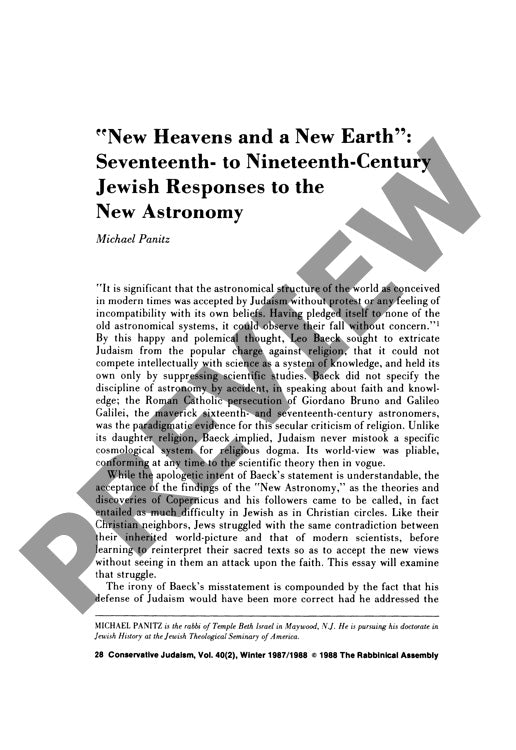New Heavens and a New Earth Seventeenth
Couldn't load pickup availability
Jewish scholars grappled far more intensely with modern astronomical discoveries than previously recognized, contrary to Leo Baeck's assertion of Judaism's seamless acceptance of the New Astronomy. Between the seventeenth and nineteenth centuries, rabbinic authorities and Jewish astronomers engaged in complex intellectual negotiations between their faith and emerging scientific theories. Through analysis of Hebrew astronomical texts and rabbinic commentaries from prominent figures like David Gans, Joseph Solomon Delmedigo, Tobias Cohn, Jacob Emden, and Moses Schreiber, distinct patterns of acceptance and resistance emerge. While Jews readily embraced certain astronomical innovations—such as the permeability of heavenly spheres and the rejection of astrology—heliocentrism provoked substantial resistance rooted in biblical literalism and traditional exegesis. Some scholars, like Gans, sought middle ground through the Tychonic system, while others ranged from complete rejection of modern science to full acceptance with creative reinterpretation of sacred texts. Later maskilim reconciled Copernican theory with Judaism by developing hermeneutical approaches that distinguished between the Bible's moral teachings and its scientific descriptions. By the nineteenth century, most Western Jews had arrived at a view of science and religion as complementary rather than conflicting paths to understanding creation—but this resolution came through decades of careful theological and philosophical deliberation, not through simple acceptance.

More Information
-
Physical Description
-
Publication Information
Published
ISBN
-
Publication Credits
Michael Panitz

